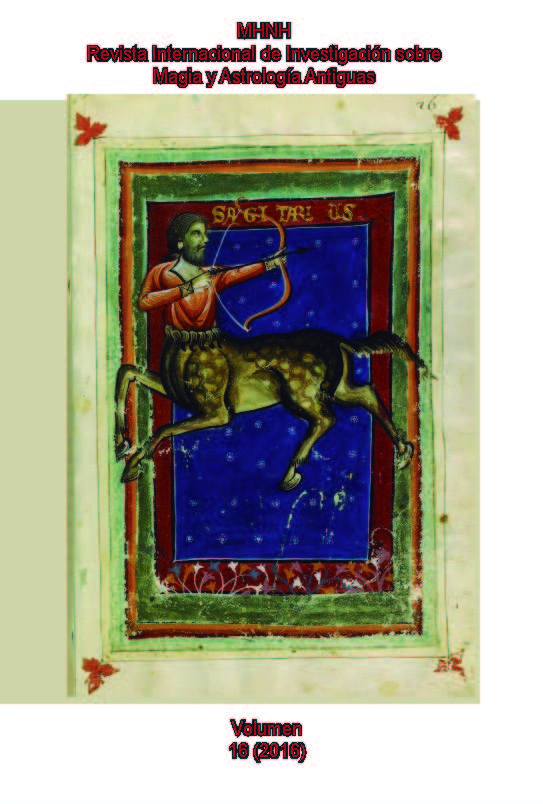Marine Equivalents of Land-Animals: Tracing the Idea from Antiquity to the Modern Period
DOI:
https://doi.org/10.24310/mhnh.vi16.15631Abstract
The idea that the various species of land-animals have marine equivalents (with some exception: the marten, the fox) is found in the early rabbinic literature, and medieval Jewish texts that depend on it, but Greek, Latin, and Talmudic Aramaic names for fishes patterned after the
name for some land-animal clearly show that such an idea was shared in the Graeco-Roman world. We are able to show that this idea was current among Scottish and Icelandic fishermen, as well as in early modern scholarly texts (thus representing elite belief), up to Telliamed, a book
first published posthumously in 1748, authored by Benoît de Maillet (1656–1738); an American edition appeared in Baltimore in 1797, apparently upon the initiative of D. Porter, who was affiliated with an observatory. Telliamed proposed a theory, an Origin of Species of sorts that had land-animal develop from supposedly similar aquatic animals, and what is more, Telliamed also was an Origin of Man of sorts, claiming as it did that among humans, different peoples developed polygenetically, separately, from aquatic men, and that more primitive peoples were relatively
closer to such origins. (As a precaution, the author had the fictitious Indian philosopher Telliamed expound the theory to a missionary. Being still unconverted, Telliamed could depart from human monogenesis as claimed by the Book of Genesis.) We also show how the idea of parallel land- and marine animals affected medieval art. Strikingly, an image shows Alexander the Great inside a glass barrel, watching underwater a fox and a ruminant, as well as humans, living on the seafloor among trees, while fish swim around. We show how prolific the idea was in Indian art depicting mythical composite animals. Composite animals have even appeared in TV commercials, and a current idea claims that chimaerae originated from finds of mixed fossil bones
Downloads
Metrics

Downloads
Published
How to Cite
Issue
Section
License
This work is licensed under a Creative Commons Attribution-NonCommercial-NoDerivatives 4.0 International License.
All contents published in MHNH. Revista Internacional de Investigación sobre Magia y Astrología Antiguas are protected under the Creative Commons Attribution-NonCommercial-ShareAlike 4.0 International (CC BY-NC-SA 4.0) license. All about this license is available in the following link: <http://creativecommons.org/licenses/by-nc-sa/4.0>
Users can copy, use, redistribute, share and exhibit publicly as long as:
- The original source and authorship of the material are cited (Journal, Publisher and URL of the work).
- It is not used for comercial purposes.
- The existence of the license and its especifications are mentioned.
There are two sets of authors’ rights: moral and property rights. Moral rights are perpetual prerogatives, unrenounceable, not-transferable, unalienable, imprescriptible and inembargable. According to authors’ rights legislation, MHNH. Revista Internacional de Investigación sobre Magia y Astrología Antiguas recognizes and respects authors moral rights, as well as the ownership of property rights, which will be transferred to University of Malaga in open access. The property rights are referred to the benefits that are gained by the use or the dissemination of works. MHNH. Revista Internacional de Investigación sobre Magia y Astrología Antiguas is published in an open access form and it is exclusively licenced by any means for doing or authorising distribution, dissemination, reproduction, , adaptation, translation or arrangement of works.
Authors are responsable for obtaining the necessary permission to use copyrighted images.






